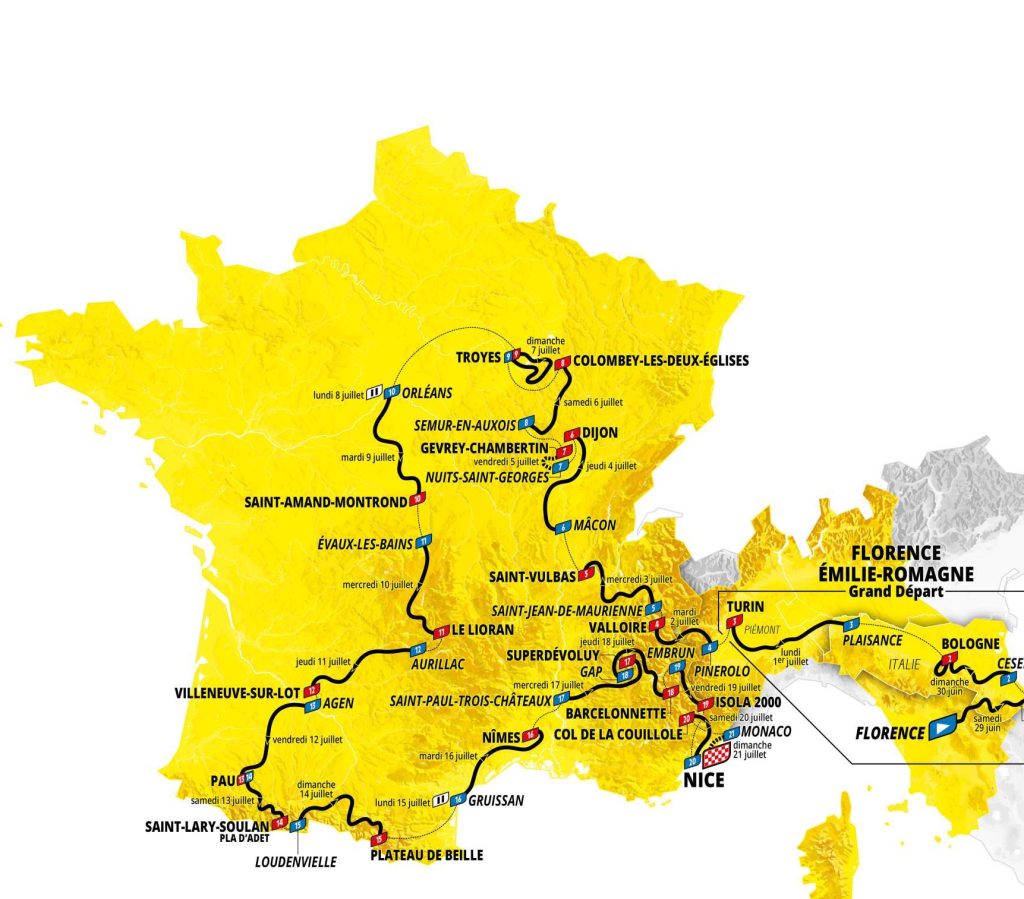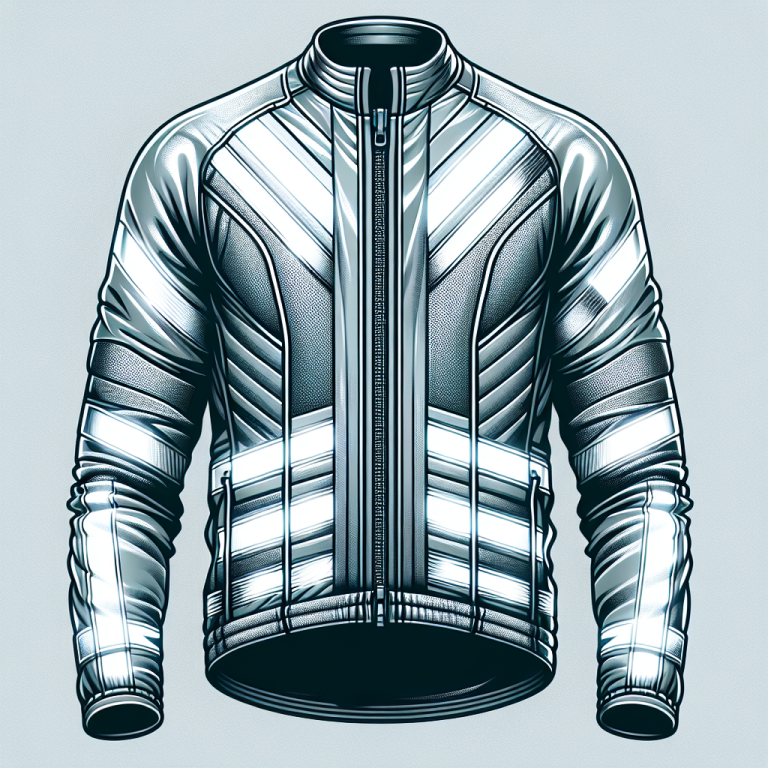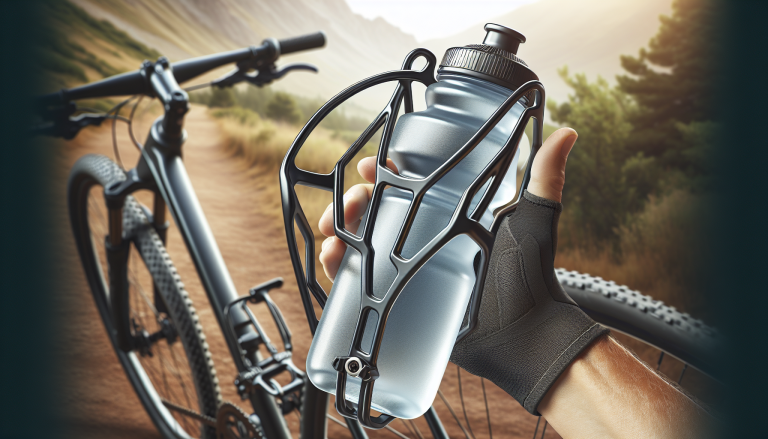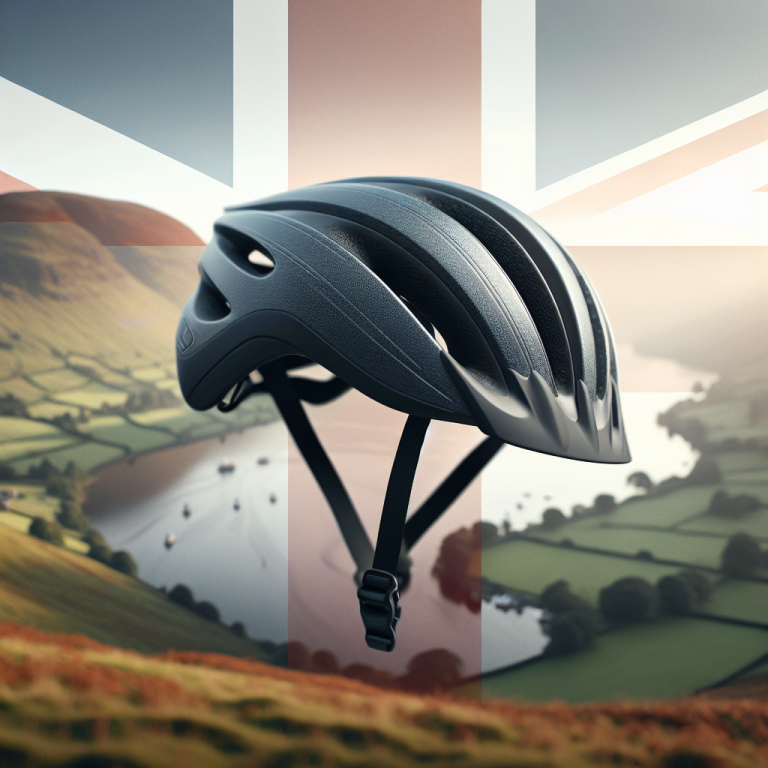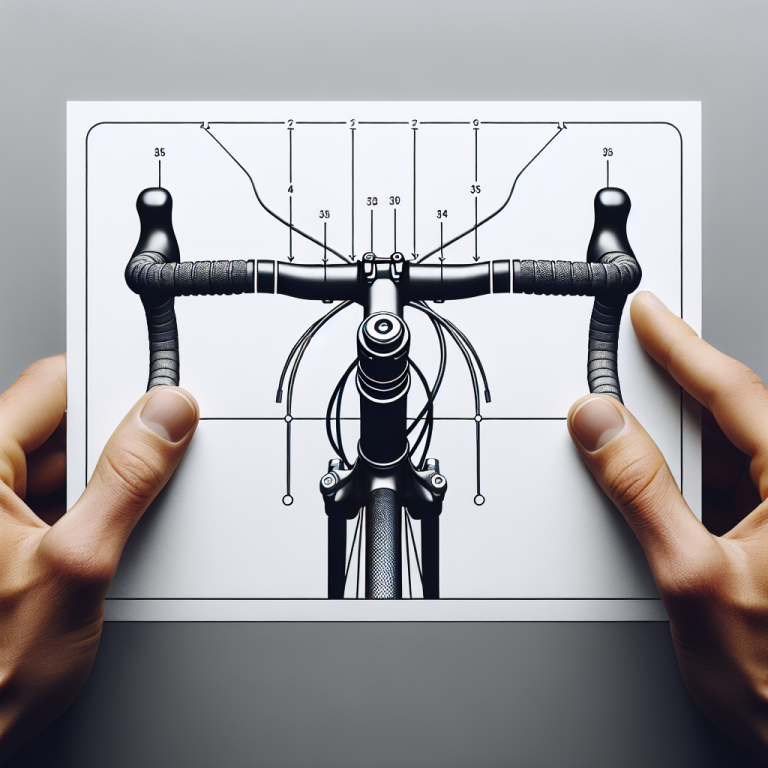Hey there! Ever wondered how many stages are there in the famous Tour De France? Well, get ready for an exciting journey as we explore the thrilling world of one of the most prestigious bicycle races in the world and find out just how many stages this epic event is made up of. Get ready to pedal through the highs and lows of this incredible race, and uncover the answer to the question that has been on every cycling enthusiast’s mind. So, fasten your helmet and let’s hit the road!
Table of Contents
ToggleThe History of the Tour De France
The Tour De France is a prestigious and historic bicycle race that has been held annually since its inception in 1903. It was created as a means to increase sales for the French sports newspaper, L’Auto, and to promote the paper’s circulation. The first edition of the race saw 60 brave cyclists embark on a grueling 2,428 kilometer journey across France, with the victor being declared after the six stages. This groundbreaking event was met with overwhelming success and laid the foundation for the rich history that the Tour De France has today.
The First Tour De France
The inaugural Tour De France took place from July 1st to July 19th in 1903. The race consisted of six stages, with distances ranging from 242 to 467 kilometers. The cyclists were faced with challenging terrains, unpredictable weather conditions, and incredibly long days in the saddle. The victor of the first Tour De France was Maurice Garin, a French cyclist, who completed the race in just over 94 hours. Garin captured the hearts of the nation and became an instant hero, solidifying the Tour De France’s place in French sporting history.
Evolution of the Tour De France
Over the years, the Tour De France has evolved and adapted to the changing landscape of professional cycling. The race has seen various modifications in terms of the number of stages, stage formats, and the introduction of new classifications. Initially, the Tour De France spanned three weeks and featured a range of challenging terrains, including mountains and flat stages. However, as the popularity of the race grew, organizers decided to add more stages and diversify the challenges faced by the riders.
Current Format of the Tour De France
The Tour De France currently consists of 21 stages, held over a period of three weeks. The race takes the cyclists on a journey through picturesque French towns, breathtaking mountains, and iconic landmarks. The stages are divided into different classifications, including flat stages, mountain stages, and time trial stages. Each stage presents unique challenges and opportunities for the riders to showcase their skills and strategies.
Classification of Stages
Flat Stages
Flat stages in the Tour De France are typically more suited to sprinters and riders who excel in fast-paced, high-speed racing. These stages feature predominantly flat terrains and are often characterized by a mass sprint finish. The flat stages provide the perfect opportunity for sprinters to demonstrate their raw power and explosiveness, as they battle it out for stage victories and valuable sprint points.
Mountain Stages
Mountain stages are among the most grueling and demanding in the Tour De France. These stages take the riders through steep and challenging ascents, pushing their physical and mental limits to the extreme. The mountain stages showcase the climbers’ abilities to conquer the most treacherous peaks and endure the punishing gradients. It is during these stages that the true champions of the mountains emerge and often make significant gains in the overall classification.
Time Trial Stages
Time trial stages in the Tour De France are individual races against the clock. The riders set off one by one, with the objective of completing the distance in the fastest time possible. Time trial stages test the riders’ ability to maintain a consistently high speed and focus on pacing themselves throughout the race. These stages often play a crucial role in determining the overall winner of the Tour De France, as they can create significant time gaps between the competitors.
Total Number of Stages
Varying Number of Stages
Throughout its history, the Tour De France has featured a varying number of stages. The race has seen as few as six stages in its first edition, expanding to as many as 25 stages in recent years. The number of stages has changed over time as organizers have sought to strike a balance between providing an engaging and challenging race without overwhelming the riders with an excessive number of stages.
Cancelled or Shortened Stages
In exceptional circumstances, stages of the Tour De France have been canceled or shortened. This may occur due to adverse weather conditions, such as extreme heat or heavy snowfall, or other unforeseen events that pose a risk to the safety of the riders or spectators. The decision to cancel or shorten stages is made with the wellbeing of all involved as the top priority, ensuring a fair and safe competition for everyone.
Duration of the Tour De France
Number of Rest Days
The Tour De France traditionally includes two rest days throughout the three-week period. These rest days provide the riders with an opportunity to recuperate and recover from the physical and mental demands of the race. During these rest days, the cyclists focus on rest, rejuvenation, and preparing for the upcoming stages. It also allows them to receive medical treatment or address any injuries they may have sustained during the race.
Overall Duration
The Tour De France typically spans over 23 days, including the rest days. The race begins on a Saturday with a grand départ, and after three weeks of intense racing, the grand finale takes place on a Sunday. The duration provides a perfect balance between allowing the riders to showcase their skills and stamina while ensuring they have enough time for rest and recovery.
Stage Distances
Longest Stage
The longest stage in the history of the Tour De France was 482 kilometers, during the inaugural race in 1903. This epic stage took the cyclists from Bordeaux to Nantes, testing not only their physical endurance but also their mental resilience. Since then, the race organizers have made efforts to ensure that the stages remain challenging but within a reasonable distance, allowing for fair competition and the riders’ safety.
Shortest Stage
The shortest stage in the Tour De France history was a mere 25 kilometers, held in 1904. This short yet intense time trial stage took place from Roubaix to Tourcoing. While shorter stages may seem less demanding, they can still be fiercely contested and play a significant role in influencing the overall classification.
Average Stage Distance
The average stage distance in the Tour De France varies from year to year. However, it typically ranges between 150 and 200 kilometers. This distance is carefully planned to strike a balance between providing exciting racing and allowing the riders to maintain their energy levels throughout the race. Each stage is meticulously crafted to challenge the cyclists’ physical and mental capabilities, ensuring a thrilling and competitive event.
Iconic Stages
Historical Stages
Throughout its long and illustrious history, the Tour De France has witnessed many iconic stages that have gone down in cycling folklore. These stages often pay homage to significant historical events or feature routes that have become legendary within the sport. From the cobbled streets of Paris-Roubaix to the legendary climbs of the Alps and Pyrenees, each stage tells a story and forms an integral part of the race’s rich tapestry.
Challenging Stages
The Tour De France is known for its challenging stages that push cyclists to their limits. The race often includes mountain stages with grueling ascents and technical descents, providing the ultimate test for the riders’ climbing abilities and descending skills. These stages require not only physical strength but also exceptional mental fortitude to overcome the pain and exhaustion associated with conquering the most challenging terrains.
Stage Finishes on Famous Mountains
One of the highlights of the Tour De France is the inclusion of stage finishes on famous mountains. These stages are often the most eagerly anticipated and generate intense excitement among riders and fans alike. Iconic mountains such as Mont Ventoux, Alpe d’Huez, and Col du Galibier have become synonymous with the Tour De France and have witnessed historic battles for stage victories and overall classification glory.
Racing Strategies
Sprinters’ Opportunities
Sprinters in the Tour De France rely on their explosive power and ability to maintain high speeds to excel in the flat stages. These riders aim to conserve energy and position themselves well as they approach the final kilometers, where they unleash their sprinting prowess and battle it out for stage victories. Sprinters often form alliances with their teams to gain a tactical advantage, utilizing lead-out trains and well-executed positioning to maximize their chances of success.
Climbers’ Advantages
Climbers in the Tour De France have a distinct advantage in the mountain stages. Their lightweight build and superior power-to-weight ratio allow them to excel in the demanding ascents, leaving their rivals trailing behind. Climbers strategically conserve energy in the flatter stages, knowing that their time to shine will come in the mountains. They often form alliances with fellow climbers and work together to create significant time gaps from their competitors, hoping to secure a lofty position in the overall classification.
Importance of Time Trials
Time trials in the Tour De France are critical, as they provide an opportunity for riders to make significant gains or losses in the overall classification. Time trial specialists aim to maintain a consistent and efficient aerodynamic position, pushing themselves to their physical limits against the clock. These stages require immense focus, discipline, and the ability to gauge and maintain optimal pacing. Time trial specialists often target these stages to establish their dominance and secure the coveted yellow jersey.
Impact of Stages on Overall Race
Individual Stage Results
While every stage of the Tour De France is important, the impact of individual stage results varies depending on the stage classifications and the riders’ objectives. Sprinters focus on the flat stages and aim to collect stage victories and sprint points, which are tallied for the green jersey competition. Climbers prioritize the mountain stages as an opportunity to gain time on their rivals and potentially secure the coveted polka dot jersey. Time trial stages play a crucial role in determining the overall classification, as they can create substantial time gaps between the riders.
General Classification
The general classification, represented by the yellow jersey, is the most prestigious prize in the Tour De France. It is a cumulative measure of each rider’s overall performance throughout the race. While stage victories are celebrated, the general classification is the ultimate measure of a rider’s consistency and ability to perform across diverse terrains. The overall winner is the rider who completes the race with the lowest cumulative time, taking into account time bonuses and penalties.
Points Classification
The points classification, represented by the green jersey, rewards consistent performance in intermediate sprints and stage finishes. Riders accumulate points based on their placings in these sprints, with more points awarded for finishing higher up the ranks. Sprinters often target this classification as it allows them to compete for a prestigious jersey and gain recognition for their prowess in the fast and furious finishes.
King of the Mountains Classification
The King of the Mountains classification, represented by the polka dot jersey, honors the riders who excel in the mountain stages. Points are awarded to riders who reach the summits of categorized climbs first, with more points available for more challenging climbs. This classification celebrates the climbers’ ability to conquer the toughest ascents and rewards their strategic tactics in securing vital points on the mountain stages.
Challenges for Riders
Changing Terrain
One of the significant challenges faced by riders in the Tour De France is the constantly changing terrain. From flat stages to mountainous landscapes, the race tests cyclists’ adaptability and versatility. Riders must be prepared to shift gears and adjust their racing strategies depending on the upcoming stages. The ability to quickly switch between different terrains is essential for success in this grueling event.
Weather Conditions
Another challenge that riders face during the Tour De France is unpredictable weather conditions. From scorching heat to torrential rain, cyclists must battle the elements while maintaining focus and composure. Weather conditions can greatly impact the outcome of a stage, requiring riders to make split-second decisions and adapt their race strategies accordingly. The ability to handle adverse weather conditions is crucial in ensuring a competitive and safe race.
Fatigue and Recovery
The Tour De France is a physically demanding race that pushes riders to the limits of their endurance. Cyclists cover thousands of kilometers over three weeks, requiring immense physical and mental stamina. Fatigue accumulates throughout the race, making recovery and rest crucial for maintaining optimal performance. Riders must carefully manage their energy levels, ensuring they strike the right balance between pushing themselves in each stage and allowing for sufficient recovery time.
Evolution of Stages
Introduction of New Stages
As the Tour De France has evolved, so too has the introduction of new stages. Organizers often seek to invigorate the race and keep it fresh by incorporating innovative route designs and novel challenges. New stages may feature exciting landscapes, historical landmarks, or emerging cycling destinations. These new additions inject excitement and anticipation into the race while providing riders with fresh opportunities to showcase their talents.
Modification of Existing Stages
In addition to introducing new stages, organizers have also made modifications to existing stages to maintain the race’s competitiveness and spectator appeal. This may involve changing the route to include more challenging climbs or redesigning the finish line to create thrilling sprint finishes. The modifications take into account factors such as rider safety, logistical considerations, and the desire for a balanced and engaging race.
Innovation in Stage Design
In recent years, stage design in the Tour De France has embraced innovation, seeking to captivate audiences and challenge riders in new ways. This includes the introduction of unique formats such as team time trials, circuit races, and even gravel stages. These innovations add an element of unpredictability to the race and require riders to adapt their strategies to the ever-evolving demands of the sport.
In conclusion, the Tour De France has a rich and storied history that spans over a century. From its humble beginnings in 1903 to the modern-day spectacle it has become, the race has captivated audiences around the world and provided a platform for cyclists to showcase their skills, endurance, and determination. The varying stages, duration, and challenges faced by riders have shaped the race’s legacy, creating iconic moments and establishing its place as the pinnacle of professional cycling. As the Tour De France continues to evolve, cyclists and fans alike eagerly anticipate the next chapter in the history of this remarkable race.

